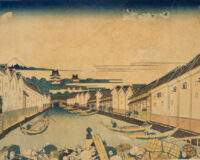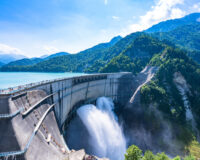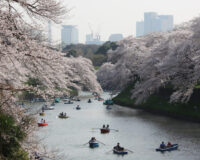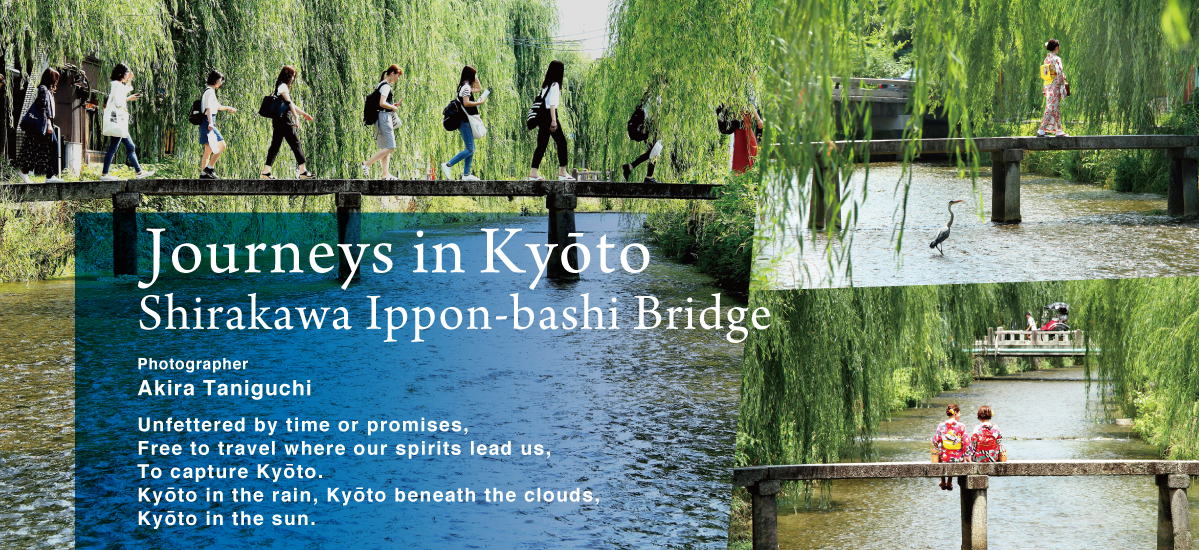
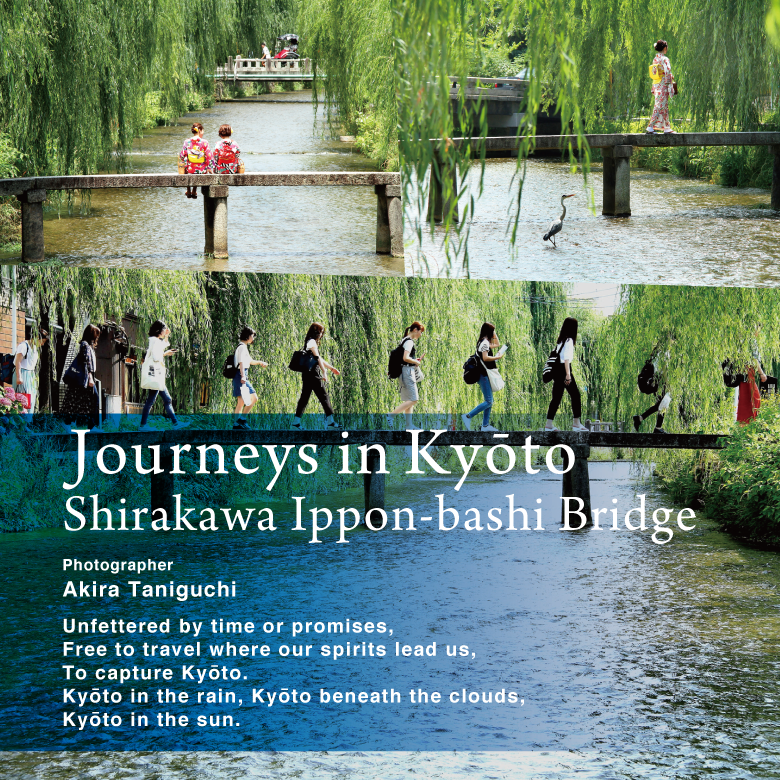
Unfettered by time or promises,
Free to travel where our spirits lead us,
To capture Kyōto.
Kyōto in the rain, Kyōto beneath the clouds,
Kyōto in the sun.
Photos : 谷口哲 Akira Taniguchi / Text : 中島有里子 Yuriko Nakajima / English Version : Judy Evans
Keyword : Journeys in Kyōto Series / Pilgrimage / Kyōto / photography / Buddhism / Bridges
As if in a painting, a solitary kimono-clad figure crosses the bridge.
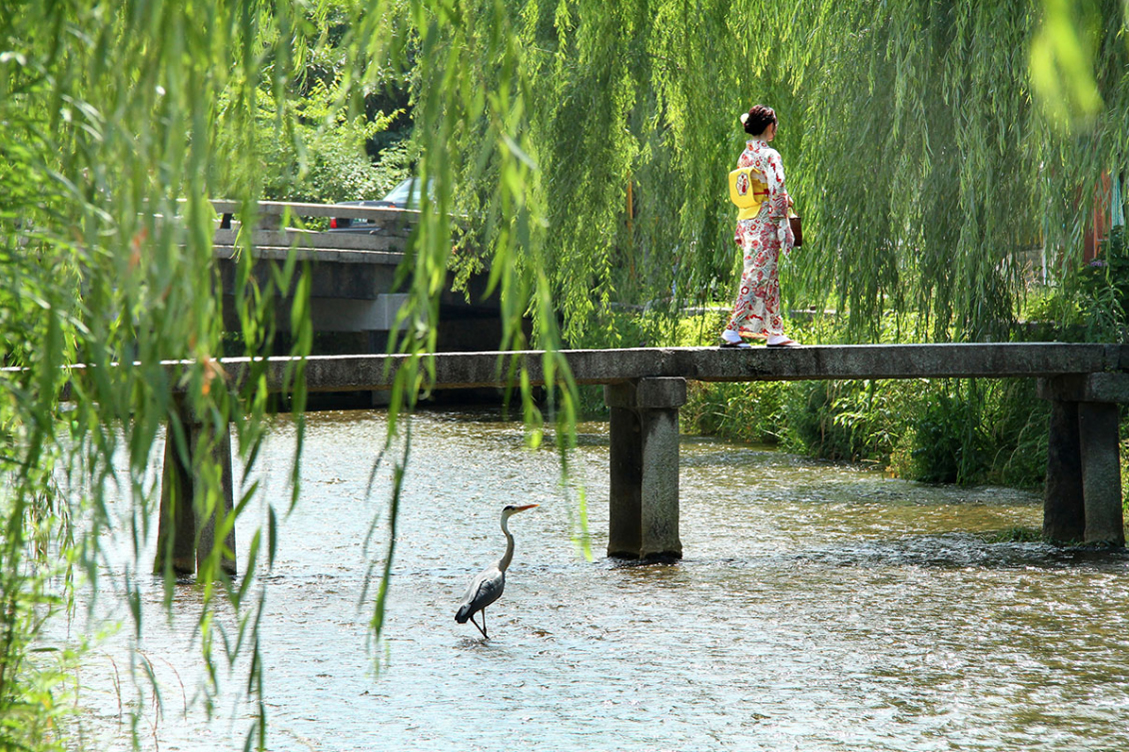
Single file only!
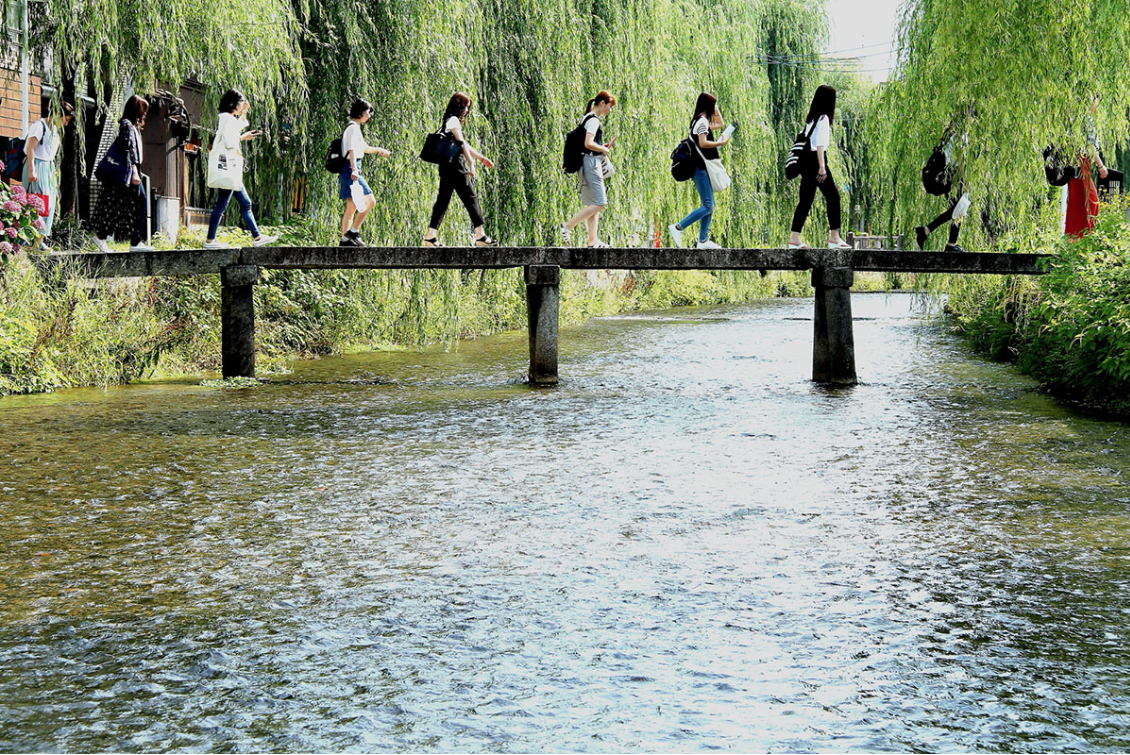
Why not linger a while?
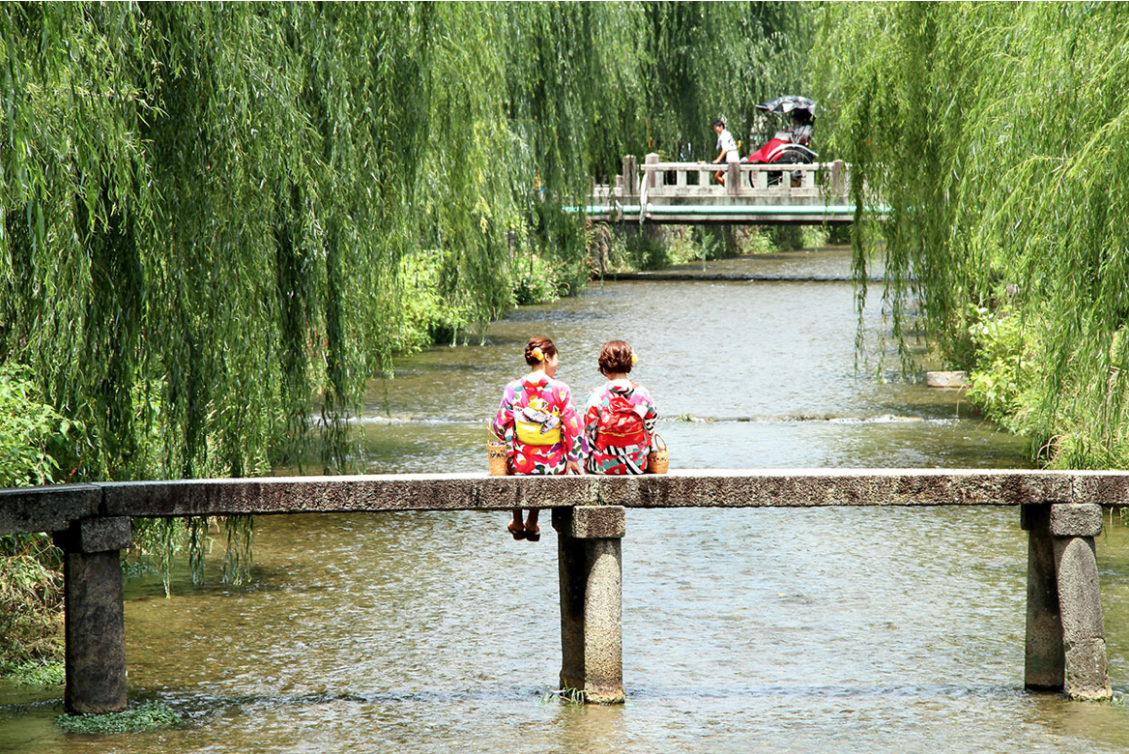
A simple stone bridge spans the Shirakawa River in the Higashiyama District, near Kachō-michi, the street leading to Chion-in Temple.
This simple bridge, made of narrow slabs of Mikage granite laid in parallel, measures only sixty centimetres wide and just under twelve metres from one bank of the river to the other. With no handrails and only enough room to cross in single file, this precarious bridge certainly makes you think twice before setting foot on it. Judging by the number of people crossing though, it would appear to be a well-used route. Some brave souls even ride over it on their bicycles!
Although the official name is Furukawa-chō Bridge, the locals have long called the bridge “Shirakawa no Ippon-bashi”, “ippon-bashi” meaning “log bridge”, while Shirakawa is the name of the river. This is a bridge of many names, though. It is also known as “Gyōja-bashi” (bridge of the pilgrims) and “Ajari-bashi” (bridge of the masters). These names are connected with the Sennichi Kaihō-gyō, a Buddhist pilgrimage which has been conducted from Enryaku-ji Temple on Kyoto’s Mt Hiei since the Heian Period (794 – 1185).
Monks on the Sennichi Kaihō-gyō spend a thousand days over the course of seven years walking (and running) a route around Mt Hiei and its environs, visiting almost 300 holy sites. The total distance walked over the seven years is said to equal the circumference of the Earth. During the fifth year of the Kaihō-gyō, on the 700th day of walking, the practitioner begins the Myō-ō Dō-iri, a nine-day fast. During this fast, which signifies a turning point in the pilgrimage, no food, water or sleep is allowed and the monk must recite the Fudō Myō-ō mantra continuously. In the past, people are said to have even died during this extreme form of asceticism.
Once the Dō-iri is fulfilled, the monk receives the title of “Ajari”, a Sanskrit word for “master”. Two years later, upon completion of the entire Sennichi Kaihō-gyō, pilgrims (gyōja) visit Sonshō-in, a small temple behind Chion-in to report that they have completed the pilgrimage. And of course, the first bridge these gyōja, or ajari, cross on their way to Sonshō-in is Ippon-bashi – hence the alternative names of Gyōja-bashi and Ajari-bashi bridge.
Shirakawa River Ippon-bashi Bridge
Official name: Furukawachō-bashi. Alternative names: Gyōja-bashi, Ajari-bashi.
The present bridge was constructed in 1907. It has been selected as an addition to the “100 Famous Bridges of Japan” list.
Location
Between Ishibashi-chō and Umemiya-chō, Higashiyama-ku, Kyoto City.


